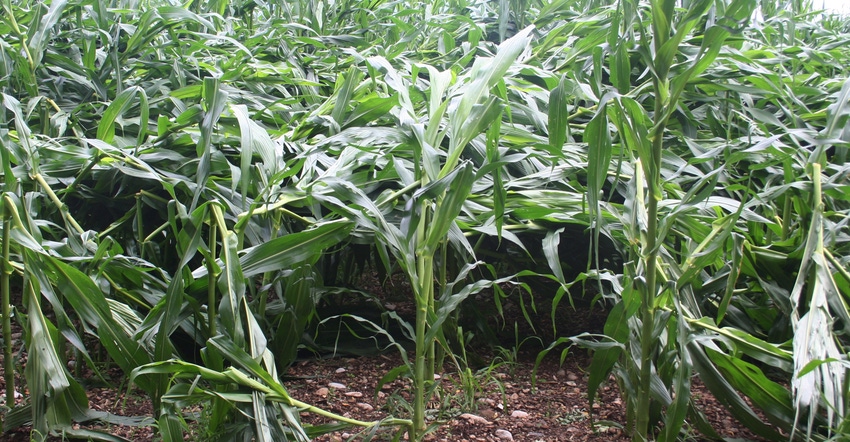September 17, 2021

After a recent hailstorm swept through eastern South Dakota, growers might be left wondering what to do next with damaged fields. Depending on the level of defoliation and plant moisture, row crops left standing may still provide a grain crop, and if not, a viable grazing or green chopping option. Before making any drastic decisions about your fields, be sure to consider the following:
Plant recovery. Allow seven to 10 days for plant recovery to assess injury as long as some pods or ears are still intact.
Crop insurance. Check with your crop insurance agent before making any decisions regarding hail-damaged fields.
Fungicide use. Think twice before applying any fungicides to protect hail-damaged crops. Fungicides are designed to protect against fungal plant diseases. Wounds in growing plants are prone to bacterial infection, which fungicides do not protect against.
Applied pesticides. Check your previously used pesticide labels. Before determining alternative uses for hail-damaged fields, harvest and forage utilization intervals must be checked on all applied pesticides.
In addition, check rotation intervals before planting another crop. For a look at herbicide rotation restrictions, view the article, Herbicide Rotation Restrictions, at extension.sdstate.edu/herbicide-rotation-restrictions.
Forage production
There are many considerations to make regarding cattle health and feed utilization before grazing a corn or soybean crop. See our Grazing Corn or the Using Soybeans as Forage videos on our YouTube channel for more information on grazing corn and soybean.
If you’re interested in chopping hail-damaged corn or soybeans to ensile, check the plant moisture first. Also, feed nutrient values may be lower than expected after hail events, especially in the case of soybeans if plants are mostly defoliated.
Annuals can extend the grazing season, or provide haying or chopping materials to help get your livestock through the winter. Crops like oats, barley and spring wheat can provide fall grazing, haying or chopping opportunities if planted now. These are ideal for growers seeking a crop that will winterkill.
Although it is relatively late in the season, there is still a good chance of developing a reasonable amount of biomass to help extend your forage resources with cool-season annuals. Winter annuals like winter rye, winter wheat or winter triticale will provide both fall and spring forage when conditions allow, if planted mid- to late September. Spring termination will be necessary with winter annuals if the crop is not intended to reach maturity.
If grazing is on the table, many cool-season cover crops (such as legumes or brassicas) should also be considered (clover, peas, radish, turnip, etc.). Regardless of crops selected for fall planting, strip grazing is typically the best way to utilize feedstuffs and reduce waste. It does require some fence-moving every few days, but it often takes less fuel and time than haying, chopping and feeding.
For good of the soil
If you do not require additional forage, this is an opportunity to dabble with cover crops. If you have specific needs — such as protecting soils from erosion, recycling nutrients, reducing compaction, suppressing weeds, etc. — cover crops may be for you. Choose a few purposes to create the right mix for your field. Cover crops will need spring termination if winter annuals are used.
Consider all the options for your hail-damaged crop before calling it quits on this year’s growing season. Before using any new feeds or feeding methods, consult with an animal nutritionist or veterinarian. If you choose to plant cool-season annuals for forage or cover, consult the Cover Crop Species Selection for Crop Production spreadsheet for ideas on annual cover crop mixes that might work best for you. There are many cool-season grass and broadleaf species to choose from that can still be successfully planted this fall if growing conditions allow.
Source: SDSU Extension, which is responsible for the information provided and is wholly owned by the source. Informa Business Media and its subsidiaries aren't responsible for any of the content contained in this information asset.
You May Also Like




